Educational robotics

Robotics in the elementary and pre school classroom
Robots are a great way to inspire students to learn about math, science, and technology!
It is an educational program designed with the intention to create a
space where the children and girls begin in the study of the science and
the technology, based on this natural desire that the children and
girls show to interact with the technology and specially with that one
that it allows to him or hers to create in a innovative way. For more
information:
http://imagiverse.org/activities/robotics/mer/elem/
http://platea.pntic.mec.es/~mhidalgo/cursorobotica/01_RoboticaEduc
Educational Robots That Teach You and Your Children Robotics

Educational Robots. Sure, robots are amazing all on their own. But several designers have made it a mission to incorporate a most important feature in their machines. Aside from companion robots, pet robots, industrial robots and household robots, there are robots that teach. Now, these educational robots will not soon possess the sinister quality of Hal, the super-intelligent computer that took over the spaceship in “2001: A Space Odyssey,” but they sure are smarter than a lot of humans we know.


Androbot's Topo by Nolan Bushnell

Arduino Robotics
Lastly, and my favorite lately is the Arduino micro-controller. The Arduino is one VERY robot friendly micro-controller. It seems to have been built with robots in mind. It is programmed with the C language and has a large number of robot-specific commands. It is expanded with add-on boards called "shields" which plug into the top of the Arduino thus looking quite shield-like. If you know C, you will be programming one of these in just a few minutes. If you don't know C, it might be an hour or so.
One of the things that makes the Arduino so attractive is that it is relatively cheap. A basic Arduino board can be found online for about $40, which is about half of that of a Basic Stamp (BOE) board. Another attractive feature is that because of its popularity there are literally THOUSANDS of open source (read "FREE") programs that can be used as-is or with a little tweaking.
Commercially there have been hundreds of shields released for sale that allow one to many, many things including driving high torque motors, speech recognition, and communicate via Ethernet.
There are also scores of robot learning kits based on the Arduino, including a kit called the "Roboduino."
Heathkit's Hero Robots
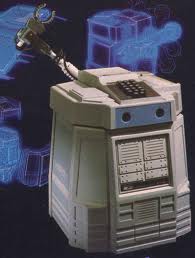
Another robot in the educational robots field that was also released in the 1980’s was the Heathkit Educational Robot, or HERO. Like most educational robots, HERO cannot and was not programmed to perform practical tasks. Such robots are designed primarily for entertainment and education purposes. HERO 1 was a self-contained mobile robot that was controlled by an on board computer using a Motorola CPU and 4 KB of RAM. The educational bot featured light, sound, and motion detectors and a sonar ranging sensor.
Educational robots feature learning platforms that are geared to teaching robotics to children, students and amateurs. These bots use the same general characteristics as industrial robots, but are much safer and less expensive to use. Educational robots normally come with a curriculum that guides students on the technicalities of robot programming, environmental interface (I.E. sensors, educational or industrial CNC machines, etc.), and maintenance. Most also come with 3D simulation software, which enables the students to practice with a virtual robot and its environment.


Leaf AI Robot

A more recent addition to the educationalrobotics is the Leaf AI Robot. Not a professional learning kit, but a home-brewed artificially intelligent robot. Leaf isopen source and has an empty custom interface board that can be purchased for about $35 and costs about $150 for required parts. A leaf robot has voice input and output(TTS) and can sense its environment with a number of sensors. Leaf can be as simple as just a talking face on PC or as complex as a whole robot rolling or walking around.

The Lego Mindstorms Robotic System
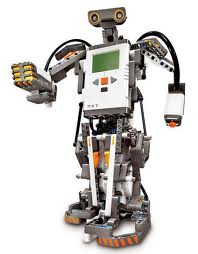
In schools, educational robots are used to help students grasp concepts in technology, engineering, math and science, using hands-on building sets, programming software, and activity materials that adhere to the curriculum. The LEGO company, for instance, collaborated with MIT Media Lab in 1986 to produce the first LEGO based educational products for use by elementary students and teachers. In 1998, LEGO® MINDSTORMS® for Schools (LMfS) and ROBOLAB™ were launched. Their programmable robotics kit is regularly updated for release, with features like advanced color sensors and other upgraded capabilities.
Microsoft Robotics

These educational kits are normally powered by programmers like Microsoft Robotics, which has downloadable, Window-based environments like Developer Studio, which allows academic, hobbyist, and commercial developers to create robotics applications across a wide variety of hardware platforms. One particular feature is the Visual Simulation Environment, which provides developers the ability to simulate and test roboticapplications using a 3D physics-based simulation tool, removing the need for hardware.
The Basic Stamp
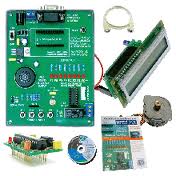
Another robotics kit, the BASIC Stamp, allows students and beginners to build either of two robots controlled by a BASIC Stamp 2SX compatible module. Manuals and software are included to guide the builders through the PBASIC programming process, and in the end, students can create wheeled, free-range or remote-controlled robots.
The BOE-Bot
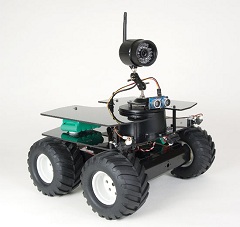
Also programmed using the PBASIC language is the BOE–Bot, short for Board of Education robot. Usually used in college and high school robotics classes, the BOE-Bot consists of a main circuit board, bread board, a plug–in micro-controller, two small servo motors to drive the wheels, and an aluminium chassis in which all parts connect into. For custom projects, students can use erector set parts, Lego blocks, and additional servos. The BOE-Bot may be programmed to perform a variety of tasks such as following lines, solving mazes, following lights, and communicating with another robot. Using the Microsoft Robotics Developer Studio software allows builders to control the robot's movements. The bot is known for being both adult and child-friendly. In fact, students as young as twelve could supposedly assemble it.

Arduino Robotics
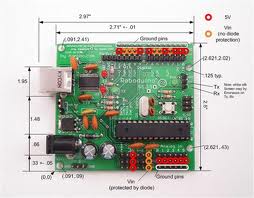
Lastly, and my favorite lately is the Arduino micro-controller. The Arduino is one VERY robot friendly micro-controller. It seems to have been built with robots in mind. It is programmed with the C language and has a large number of robot-specific commands. It is expanded with add-on boards called "shields" which plug into the top of the Arduino thus looking quite shield-like. If you know C, you will be programming one of these in just a few minutes. If you don't know C, it might be an hour or so.
One of the things that makes the Arduino so attractive is that it is relatively cheap. A basic Arduino board can be found online for about $40, which is about half of that of a Basic Stamp (BOE) board. Another attractive feature is that because of its popularity there are literally THOUSANDS of open source (read "FREE") programs that can be used as-is or with a little tweaking.
Commercially there have been hundreds of shields released for sale that allow one to many, many things including driving high torque motors, speech recognition, and communicate via Ethernet.
There are also scores of robot learning kits based on the Arduino, including a kit called the "Roboduino."

Gostei bastante desta publicação. Aprovo e recomendo. Hiran
ReplyDeleteThanks for sharing..
ReplyDeleterobot kit
Robotics in Education
Educational robotics
nice
ReplyDeleterobot kit
Robotics in Education
Educational robotics
I Like to add one more important thing here, The Educational Robots Market is expected to be around US$ 1974 Million by 2025 at a CAGR of 17% in the given forecast period.
ReplyDeleteThanks for Sharing such a Informative Write up !
ReplyDeleteFor more information about Robotics Kits in India
Hi,
ReplyDeleteThank you for sharing such insightful content. I found this post incredibly informative and well-written. Your perspective on Robotics is refreshing and thought-provoking. Robomatiic appreciate the effort you put into explaining. This article resonated with me on so many levels.
I look forward to reading more of your work in the future. Keep it posting these type of blog in the future. Please visit our website:
<a href="Robotics Classes in Coimbatore”> https://robomatiic.in </a>